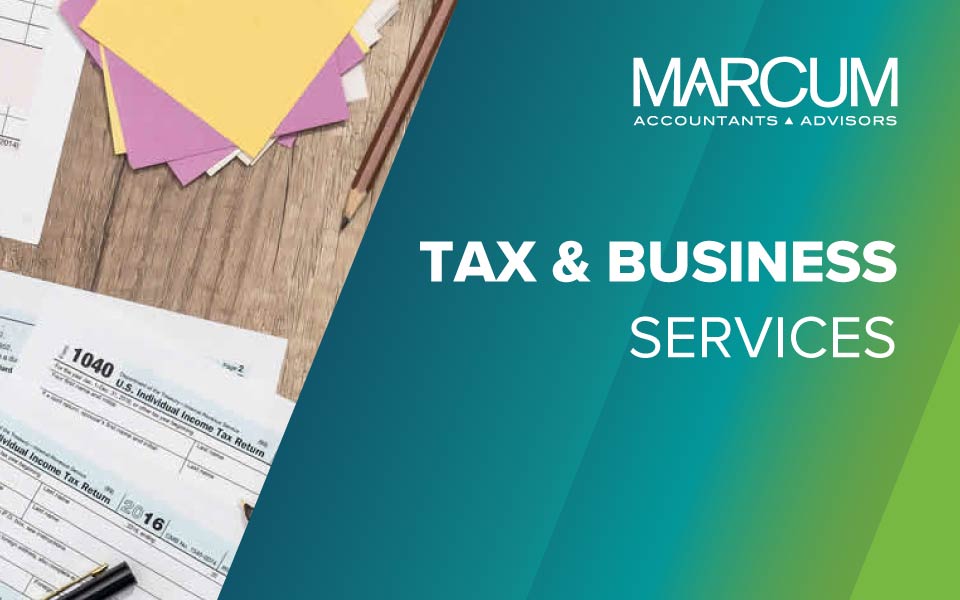IRS Issues Guidance Related to the Qualified Business Income Deduction
By Kayla Lau, Manager, Tax & Business Services

Despite the recent government shutdown, the IRS issued highly anticipated final regulations regarding the Section 199A deduction. The IRS also issued proposed regulations regarding the treatment of previously suspended losses.
As detailed in a previous blog, What Business Owners Should Know About the New Qualified Business Income Deduction, Section 199A allows taxpayers to deduct up to 20% of qualified business income, effective for tax years 2018 through 2025. The qualified business income (QBI) deduction is available to income generated by sole proprietorships, partnerships, S corporations, trusts and estates. Proposed regulations were issued in August 2018, and after more than 300 comments, the IRS issued final regulations after considering these comments.
Definitions
To qualify for the QBI deduction, taxpayers must be able to demonstrate they have “trade or business income.” The final regulations specifically define a trade or business as “a trade or business under Section 162 (trade or business expenses) other than the trade or business of performing services as an employee.”
For taxpayers with income in excess of $315,000 (MFJ) or $157,500 (single), the deduction is limited to the greater of 50% of W-2 wages or the sum of 25% of W-2 wages plus 2.5% of the unadjusted basis of qualified property (UBIA). Wages are defined as total wages paid during the calendar year which are subject to withholding, elective deferrals and deferred compensation. This is generally Box 5 of your W-2, or Medicare wages. To qualify as wages, the amount must be reported on a timely filed return with the Social Security Administration (SSA). Qualified business property includes all tangible property held and available for use in the trade or business at the close of the tax year for which the depreciable period has not yet ended, and is subject to specific measurement provisions. Therefore, property that is sold at the end of the year would not be included as qualified business property.
Specified service trades or businesses (SSTBs), which involve “the performance of services in the fields of health, law, accounting, actuarial science, performing arts, consulting, athletics, financial services, brokerage services, or any trade or business where the principal asset is the reputation or skill of one or more of its employees or owners,” have additional limitations. The deduction is completely eliminated for owners of SSTBs with taxable income in excess of $415,000 (MFJ) or $207,500 (single).
Qualified Business Income
The basis for the QBI deduction is qualified business income. The regulations define QBI as “the net amount of qualified items of income, gain, deduction, and loss with respect to any trade or business of the taxpayer.” Guaranteed payments are not considered QBI as the payments are not attributable to a trade or business. However, Section 481 adjustments (adjustments required by changes in method of accounting) and previously disallowed losses generated in tax years 2018 and beyond are taken into account to reduce QBI. Although not clear under the proposed regulations, the final regulations specifically state that the self-employed health insurance deduction, contributions to qualified retirement plans (e.g., SEP IRA contributions) and the deductible portion of self-employment tax are all considered deductions in arriving at QBI.
Items not included in QBI include short-term and long-term capital gains and losses, dividends, interest income not allocable to a trade or business and other income not effectively connected with a trade or business. Reasonable compensation received from an S corporation shareholder is also not considered QBI income. However, the IRS has the ability to reclassify amounts as reasonable compensation to reduce the QBI, and thus the QBI deduction.
Aggregation Rules
Aggregation of trades or businesses is available to taxpayers but is not required. To qualify for aggregation, the individual or relevant pass-through entity must show:
- Common ownership, defined as the same person or group of persons owning 50% or more of each trade or business, either directly or through attribution rules,
- The ownership exists at the end of the taxable year,
- All aggregated trades or businesses have the same taxable year,
- None of the trades or businesses is specified service trades or businesses, and
- At least two of the following:
- Provide products, property or services that are the same or customarily offered together
- Share facilities or centralized business elements
- Operated with interdependencies
Once an individual chooses to aggregate trades or businesses, the aggregated trades or businesses must be consistently reported in all subsequent taxable years. Newly created or newly acquired businesses may be added but existing businesses may not. Additionally, if you fail to aggregate the trades or businesses, you may not amend your return to aggregate the trades or businesses after the 2018 taxable year.
Aggregation is a unique option for taxpayers to increase the QBI deduction available. If a taxpayer is subject to the overall wage limitation, aggregating multiple businesses allows the taxpayer to also aggregate total wages, increasing the overall deduction.
Reporting Rules
For each taxable year an individual or pass-through entity aggregates trades or businesses, a statement must be attached to the return which includes:
- A description of each trade or business
- The name and EIN of each entity
- Information identifying trades or businesses that were formed, closed, acquired or disposed during the taxable year
- Information identifying aggregated trades or businesses of relevant pass-through entities (RPEs) in which the individual holds an ownership interest
- Other information required by the Commissioner
Each RPE must also include with Schedule K-1 any QBI, W-2 wages, unadjusted basis immediately after acquisition (UBIA) of qualified property or specified service trade or business (SSTB) determinations for each shareholder or partner. Failure to report this information will cause the owner’s share of each unreported item to be zero.
Calculating Wages
Rev. Proc. 2019-11 details three methods available for calculating W-2 wages for purposes of the QBI deduction. Only W-2 wages that have been properly allocated to QBI are taken into account in computing the wage limitations. As mentioned above, only wages reported on Forms W-2 and included in a timely filed return with the SSA are considered for the QBI. Wages paid to “statutory employees” (indicated in Box 13 of Form W-2) are not included. Short year taxpayers only consider wages paid during the same short taxable year using the tracking wages method described below.
There are three methods taxpayers can use to calculate wages:
- Unmodified Box Method – wages are calculated by taking the lesser of Box 1 wages or Box 5 wages for all W-2s filed, without any modifications.
- Modified Box 1 Method – wages are calculated by taking Box 1 wages of all W-2s filed, less Box 1 wages not subject to federal income tax withholding, plus amounts reported in Box 12 with codes D, E, F, G and S.
- Tracking Wages Method – wages are calculated as total amount of wages subject to federal income tax withholding reported on Form W-2 plus amounts reported in Box 12 with codes D, E, F, G and S.
This revenue procedure is final and is applicable to taxable years ending after December 31, 2017.
Safe Harbor for Rental Real Estate
Notice 2019-07, issued in addition to the final regulations, contains a proposed revenue procedure that contains a safe harbor rule for treating a rental real estate enterprise as a trade or business for Section 199A purposes. Stay tuned for a future blog post detailing additional information regarding this safe harbor provision.
Effective Date
Section 199A is a complex calculation but can yield significant savings to taxpayers. The IRS has attempted to provide guidance through the above final regulations. Unless specifically mentioned above, the regulations have not yet been codified and will be effective on the date of publication in the Federal Register. However, there is a reliance provision for taxable year 2018.
Questions about the Section 199A deduction or other tax planning issues? Contact Kayla Lau, Manager, Tax & Business Services.



















